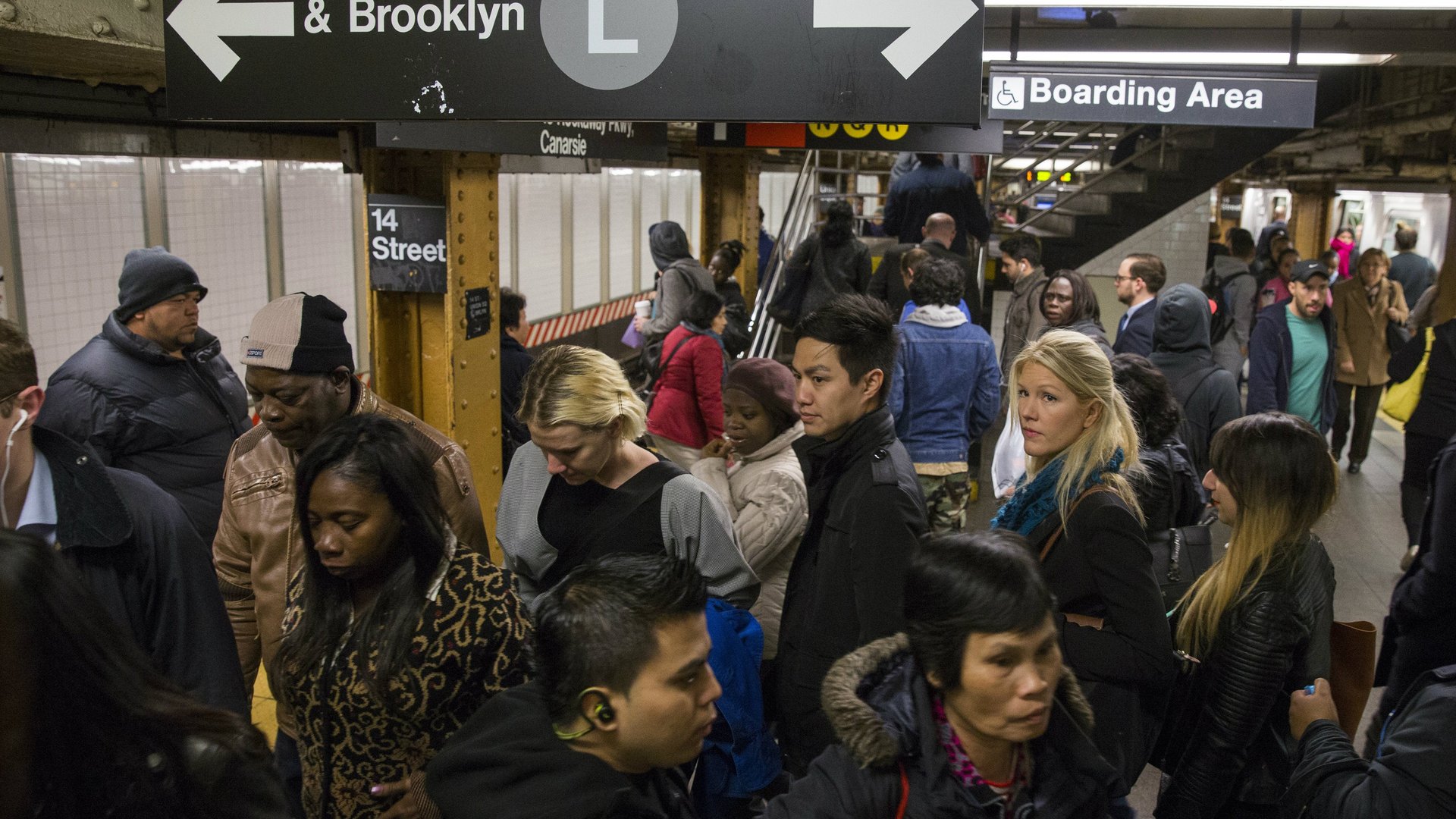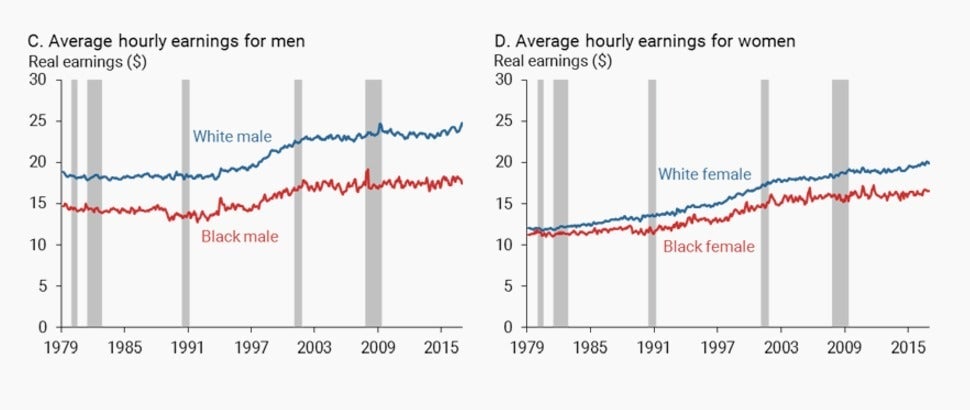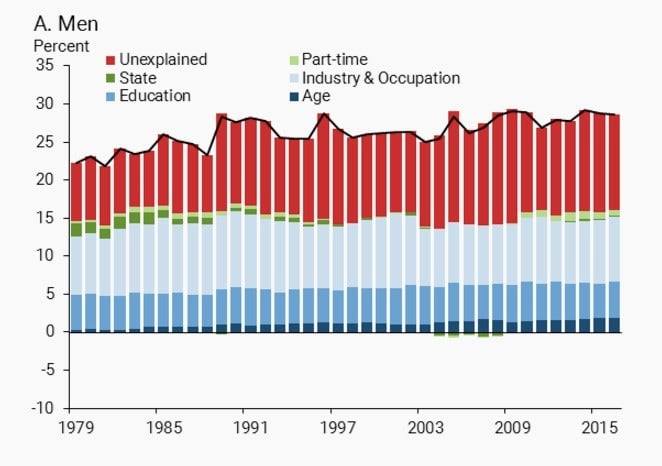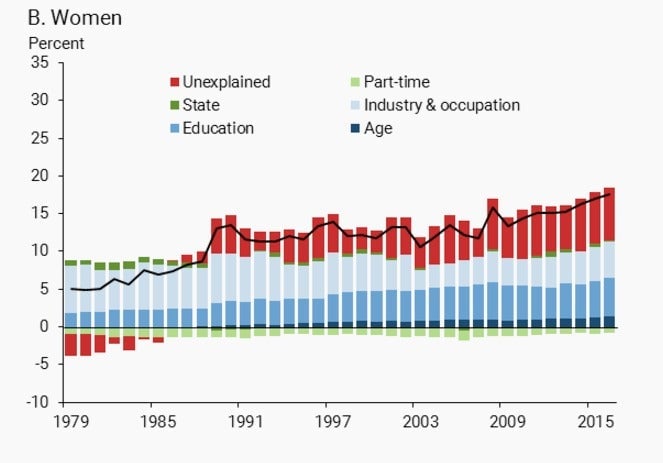The growing gap between black and white workers’ wages in the US is getting harder to explain
The gap in employment and earnings between black and white workers in the US is nothing new. Still, 53 years after the Civil Rights Act outlawed discrimination, research from the Federal Reserve Bank of San Francisco shows that the gap in wages between races has widened in recent years.


The gap in employment and earnings between black and white workers in the US is nothing new. Still, 53 years after the Civil Rights Act outlawed discrimination, research from the Federal Reserve Bank of San Francisco shows that the gap in wages between races has widened in recent years.
The research also highlights a particularly concerning aspect of this: the increase in the wage gap between black and white workers is also becoming more difficult to explain. That’s to say that the disparity in earnings that cannot be tied to location, education, working hours, job type, or age, is increasing.
In 1979, the average black man in the US earned about 80% of the average white man’s hourly wage. By 2016, the average black man earned just 70% as much. Among women, in 1979 the average black woman earned 95% of the average white woman’s wage, but last year this had fallen to 82%.

If, according to economic theory, wages are a reflection of productivity, this gap should be explained by “observable” factors such as age, education, and job type. Location and part-time work status are also easily measured. Researchers at the San Francisco Fed went further, trying to quantify how much these observable factors explained the gap, instead of harder-to-measure factors, such as institutions, historical pay norms, discrimination, and the public policies like the minimum wage.
In the charts below, the black line plots the earnings gap in each year and the bars separate out the factors causing it. The red bar shows the “unexplained” difference.

While education, industry, and occupation explain most of the difference, the researchers puzzled over a large part of the difference that couldn’t easily be accounted for. In a recently published paper, they write:
Perhaps more troubling is the fact that the growth in this unexplained portion accounts for almost all of the growth in the gaps over time. For example, in 1979 about 8 percentage points of the earnings gap for men was unexplained by readily measurable factors, accounting for over a third of the gap. By 2016, this portion had risen to almost 13 percentage points, just under half of the total earnings gap. A similar pattern holds for black women.
The pattern for women is even more perplexing. The “unexplained” factor suddenly starts to widen the wage gap between black and white women starting in the mid-1980s. It grows rapidly from there.

This research builds on a more in-depth study by the Federal Reserve (pdf) published in June. That paper also found that observable factors were unable to explain the growing wage gap. By comparison, the wage gap between Hispanic and white workers was notably smaller and mostly explained by differing levels of education.
The most important question is, then, how much of this “unexplained” gap between black and white workers is down to discrimination? The short answer: probably most of it.
The authors of the San Francisco Fed study conclude that their research “implies that factors that are harder to measure—such as discrimination, differences in school quality, or differences in career opportunities—are likely to be playing a role in the persistence and widening of these gaps over time.”
The Fed study warns that some of the explanation could be because of imperfect data that measure things such as the racial skills gap. However, the researchers say it’s also possible that they are “over-controlling” for non-discriminatory factors by including, for example, education. Differences in school spending, teacher quality, attainment, and related factors face issues of discrimination at their core. In fact, additional research by the San Francisco Fed showed that black people with bachelor’s degrees saw the earnings gap with their white counterparts increase by more than for high-school graduates.
The other explanation they offer is “personal and institutional discrimination.” Prison time will have an impact on this data too, but the higher levels of incarceration among black people and a criminal justice system that is still marred by racial inequality, suggests discrimination is also at play here.
Ultimately, it seems that discrimination—whether in the “unexplained” category, or more structural racial bias that exists in educational systems and elsewhere—is widening the disparity in wages between black and white workers. Time alone will not close this gap, researchers conclude. In fact, time seems to be making it worse.